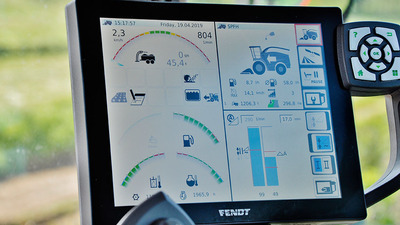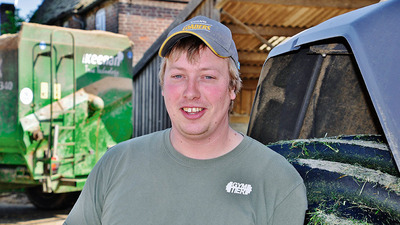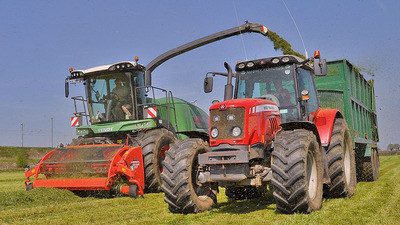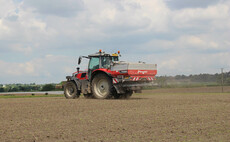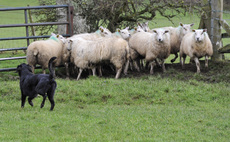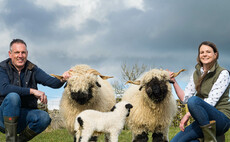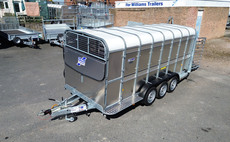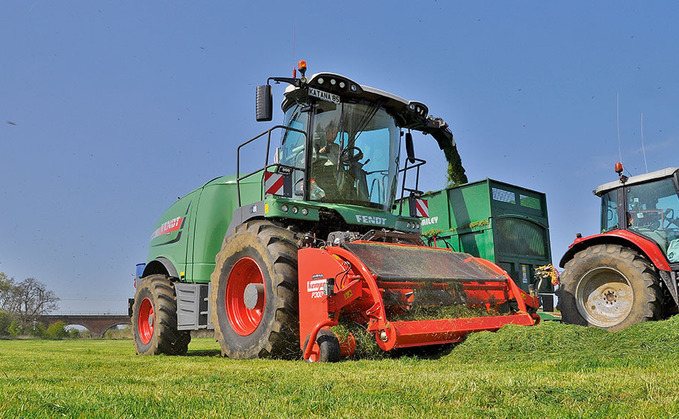
Wiltshire native Ollie Kinch was one of the first UK contractors to purchase a Fendt Katana 85, following the harvester's UK launch in 2015.
As his harvester begins its fourth season, Simon Henley finds out how it is getting on...
The Fendt Katana 85 is the largest self-propelled forage harvester (SPFH) produced by the Bavarian manufacturer.
Powered by a 21-litre V12 MTU engine rated at 850hp, Fendt's flagship SPFH was introduced in December 2014 as an addition to the smaller Katana 65 model, which had been introduced amidst great media hype the year before.
One of the first adopters of the forager was Wiltshire contractor Ollie Kinch.
He has owned his Katana 85 since 2015, when he purchased it as a replacement for a Claas Jaguar 870.
He says: "When I started contracting 11 years ago, I had a trailed JF harvester.
"This did not prove to be very successful, so after several difficult seasons I purchased a second-hand Claas Jaguar.
"The Jaguar worked well. However, a few years ago we were at the end of the maize season when the chopping cylinder bearings failed.
"Having bought numerous MF and Fendt tractors from Lister-Wilder over the years, it was suggested that while the Claas was being repaired, we could use its Fendt Katana 85 demonstrator.
"The Fendt did 160 hectares of maize that season, and has been on the farm ever since."
The purchase of a Fendt Katana 85, arguably represented quite a gamble for Mr Kinch.
This was a new model to the market in 2015, which was both unproven and almost unheard of at that time. So was it a worthwhile investment?
"The price was comparable with everything else at the time," recalls Mr Kinch.
Support
"I had also established a good working relationship with Lister-Wilder, so I was confident I would get the service support I needed.
"We have had very little trouble with it, although I do have the advantage of having a close friend of my family who is the forage specialist for Lister-Wilder.
"Richard Gaisford sometimes comes and drives the harvester for me on weekends. He has a great deal of experience with these machines, so he has been able to identify any potential issues."
According to Mr Kinch, the chopping efficiency of the Katana 85 makes this harvester eminently suitable for harvesting ‘strictly managed' grass crops, where five or six cuts may be taken throughout the season.
Mr Kinch's customers include numerous organic dairy farms, in addition to farmers who produce milk for Cadbury.
During our visit on April 19, he was harvesting first-cut grass for a neighbouring farmer whose milk was used for chocolate production.
At the wheel of the Katana was Mr Gaisford. He says: "During first cut silage, when we are chopping leafy grass crops which have often been tedded, we run with just 14 knives instead of 28. We have found by doing this, the chopping cylinder can cope with clumps in the swath more effectively, without compromising chopping quality."
In the grass harvesting season, Mr Kinch starts with his 14-knife setup using grass knives from the previous season. These will then be swapped for 28 brand new knives after first cut is complete. During the maize harvest, the Katana 85 is re-fitted with new maize knives and a maize shear bar.
"One of the advantages of the Fendt Katana is that the kernel cracker can be hoisted out of work very easily, and retained in its suspended position," adds Mr Gaisford.
"This is useful, if for example you have a late cut of grass to do at the start of the maize harvest."
"The harvester is serviced every 500 hours, and it has just had its major 2,000-hour inspection, which cost about £1,900.
"It has not been an expensive machine to run. Fendt offers a five-year unlimited hour warranty package, and Lister-Wilder have always kept us going.
"One of the key benefits of the Katana is that the control systems have essentially been taken from the tractors. If you can operate a Fendt Vario tractor, you can operate a Katana.
"Overall, I have been very pleased with the Fendt Katana 85," concludes Mr Kinch.
"The chop quality is excellent, and it has the harvesting capacity we need for grass and maize.
"At the end of the day, all these big harvesters are very similar. What counts is the service and support you get from your dealer."
